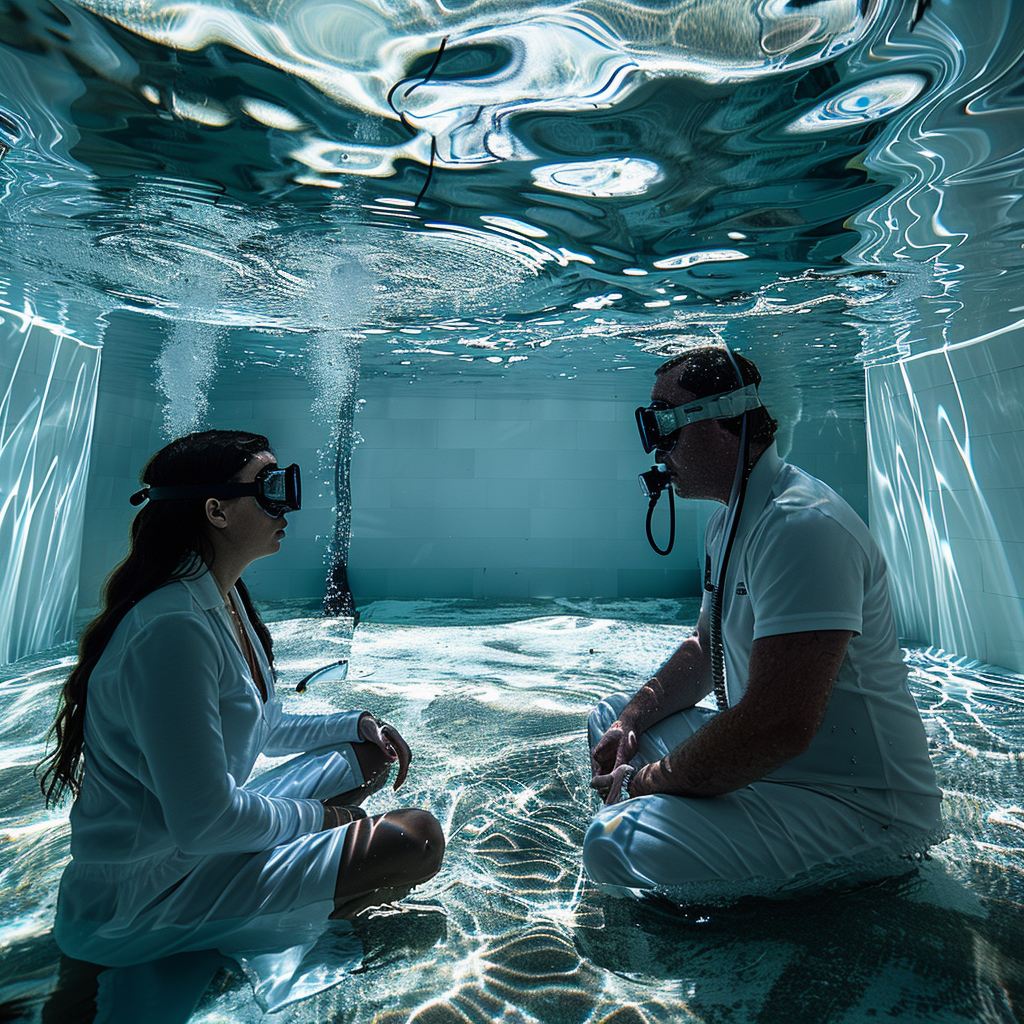The Water Temple Sound Journey is designed not just as an experience of relaxation and sensory immersion but as a profound therapeutic session that integrates principles from Cognitive Behavioral Therapy (CBT), especially the use of guided imagery, meaning-making, and the cultivation of a safe, nurturing environment. This approach is rooted in evidence-based practices known to facilitate healing from trauma and promote mental well-being.
Guided Imagery in CBT: Guided imagery, a technique often used in CBT, involves the use of mental images to help a person feel relaxed or focused. Studies suggest that guided imagery can reduce symptoms of anxiety and stress, and when combined with the sensory experience of sound and water, it can create a powerful mental and emotional healing environment. For instance, Menzies, Taylor, and Bourguignon (2006) found that guided imagery could significantly reduce symptoms of PTSD in a clinical setting, suggesting its potential in a therapeutic context like the Water Temple.
Meaning-Making: The process of meaning-making, or the way individuals interpret and make sense of life events, is another critical component. Research by Neimeyer, Klass, and Dennis (2014) highlights the role of meaning-making in the context of bereavement and trauma recovery, indicating that facilitating a narrative or understanding of one’s experiences can contribute significantly to healing. In the Water Temple Sound Journey, participants are encouraged to explore their inner narratives and find personal meaning in their experiences, supported by the immersive and reflective qualities of water and sound.
Creating a Safe Healing Environment: The importance of a safe, supportive environment in healing from trauma cannot be overstated. According to Herman (1992), establishing safety is the first step in recovering from traumatic stress. The non-verbal, immersive nature of the Water Temple Sound Journey, combined with the intentional use of guided imagery and meaning-making, fosters a sense of security and containment essential for participants to explore and heal from past traumas.
Conclusion: By integrating these elements with the sensory experience of sound therapy in water, the Water Temple Sound Journey offers a multi-dimensional approach to healing. It acknowledges the complexity of human experiences and the need for diverse therapeutic modalities to address emotional and psychological well-being. This holistic approach is supported by the growing body of research on the efficacy of sound therapy, hydrotherapy, guided imagery, and meaning-making in trauma recovery and mental health improvement, providing a strong foundation for the therapeutic benefits of the Water Temple Sound Journey.
References:
- Menzies, V., Taylor, A.G., & Bourguignon, C. (2006). Effects of guided imagery on outcomes of pain, functional status, and self-efficacy in persons diagnosed with fibromyalgia. The Journal of Alternative and Complementary Medicine, 12(1), 23-30.
- Neimeyer, R.A., Klass, D., & Dennis, M.R. (2014). A social constructionist account of grief: Loss and the narration of meaning. Death Studies, 38(8), 485-498.
- Herman, J.L. (1992). Trauma and Recovery. New York: Basic Books.

